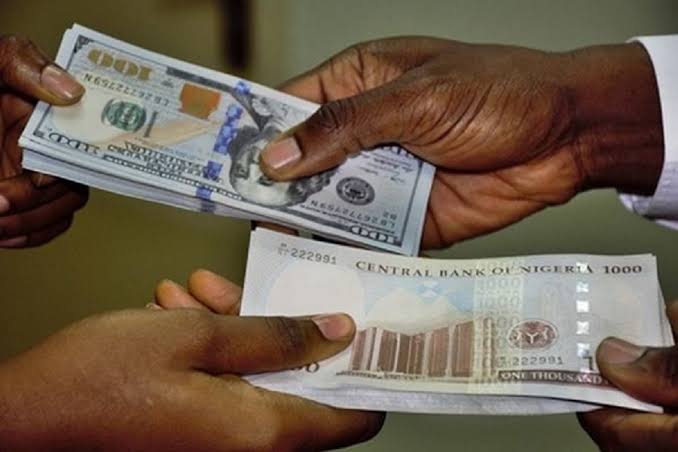Forex turnover dropped by 67.5%, as Nigeria’s exchange rate at the NAFEX window depreciated against the dollar to close at N385.83/$1 during intra-day trading on Friday, November 20.
Also, the naira hit another new low as it depreciated again against the dollar, closing at N484/$1 at the parallel market on Friday, November 20, 2020, as companies and individuals divert export proceeds and remittances away from approved channels according to Bloomberg.
This is also as demand pressure increases as importers stock up goods ahead of Christmas sales.
The CBN, a few days ago relaxed its earlier policy on banning third parties from having access to foreign exchange routed through Form M.
Parallel market: According to information from Abokifx – a prominent FX tracking website, at the black market where forex is traded unofficially, the Naira depreciated against the dollar to close at N484/$1 on Friday.
READ ALSO: Fuel Price: Labour Leaders Walk Out Of Meeting With FG
This represents an N4 drop when compared to the N480/$1 that it exchanged for on Thursday, November 19.
- The local currency had strengthened by about 7.8% within one week in September at the black market, as the CBN introduced some measures targeted at exporters and importers.
- This is to boost the supply of dollars in the foreign exchange market and reduce the high demand for forex by traders.
- The CBN has sold about $1 billion to BDCs since they resumed forex sales on Monday, September 7, 2020.
- This was expected to inject more liquidity into the retail end of the foreign exchange market and discourage hoarding and speculation.
- However, the exchange rate against the dollar has remained volatile after the initial gains made, following the CBN’s resumption of sales of dollars to the BDCs.
- The President of the Association of Bureau De Change Operators, Aminu Gwadebe, said he expects the impact of the extra liquidity in the market to be gradual.
- Despite the drop in speculative buying of foreign exchange, the huge demand backlog by manufacturers and foreign investors still puts pressure and creates a volatile situation in the foreign exchange market.
- This represents a 33 kobo drop when compared to the N385.50/$1 that it exchanged for on Thursday, November 19.
- The opening indicative rate was N386.23 to a dollar on Friday. This also represents a 30 kobo drop when compared to the N385.93 that was recorded on Thursday.
- The N392.51 to a dollar was the highest rate during intra-day trading before it still closed at N385.83 to a dollar. It also sold for as low as N383/$1 during intra-day trading.
- Forex turnover: Forex turnover at the Investor and Exporters (I&E) window declined by 67.5% on Thursday, November 19, 2020.
- According to the data tracked by Nairametrics from FMDQ, forex turnover dropped from $205.84 million on Thursday, November 19, 2020, to $66.89 million on Friday, November 20, 2020.
- The CBN is still struggling to clear the backlog of foreign exchange demand, especially by foreign investors wishing to repatriate their funds.
- The huge increase in dollar supply after days of decline reinforces the volatility of the foreign exchange market. The supply of dollars has been on a decline for months due to low oil prices and the absence of foreign capital inflow into the country.
- The average daily forex sale for last week was about $169.93 million, which represents a huge increase from the $34.5 million that was recorded the previous week.
- Total forex trading at the NAFEX window in the month of September was about $1.98 billion, compared to $843.97 million in August.
- The exchange rate is still being affected by low oil prices, dollar scarcity, a backlog of forex demand, and a shaky economy that
- has been hit by the coronavirus pandemic.
- A financial expert and Managing Director of Financial Derivatives had stated that he expects the exchange rate at the parallel market to likely depreciate to N470-N475/$1 in November and December due to low oil prices that will further limit foreign exchange supply.
- Some members of MPC of the CBN have expressed serious concerns over the increasing demand pressure in the country’s foreign exchange market. This is an obligation of manufacturers to their foreign suppliers that continues to increase in the face of dollar shortages.











